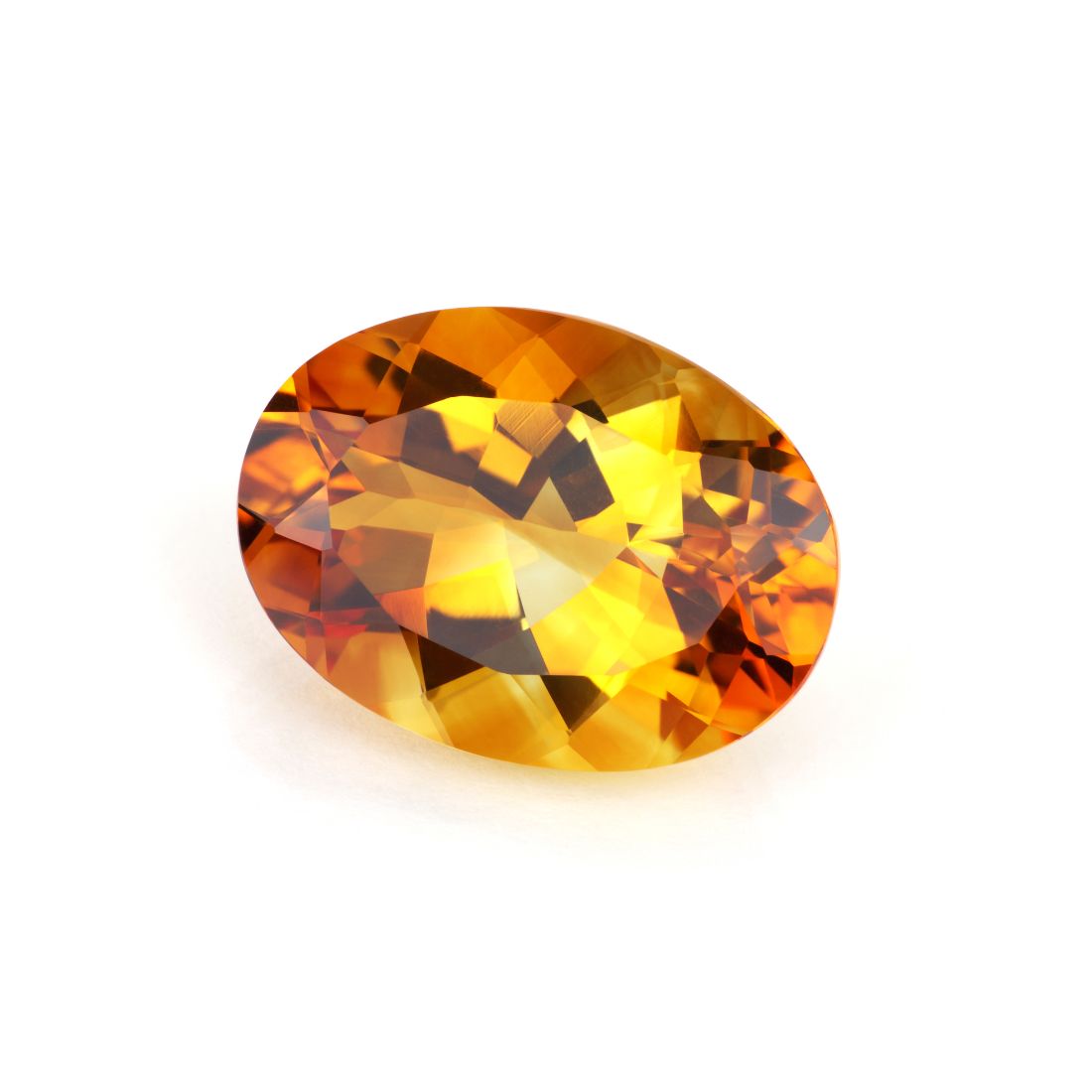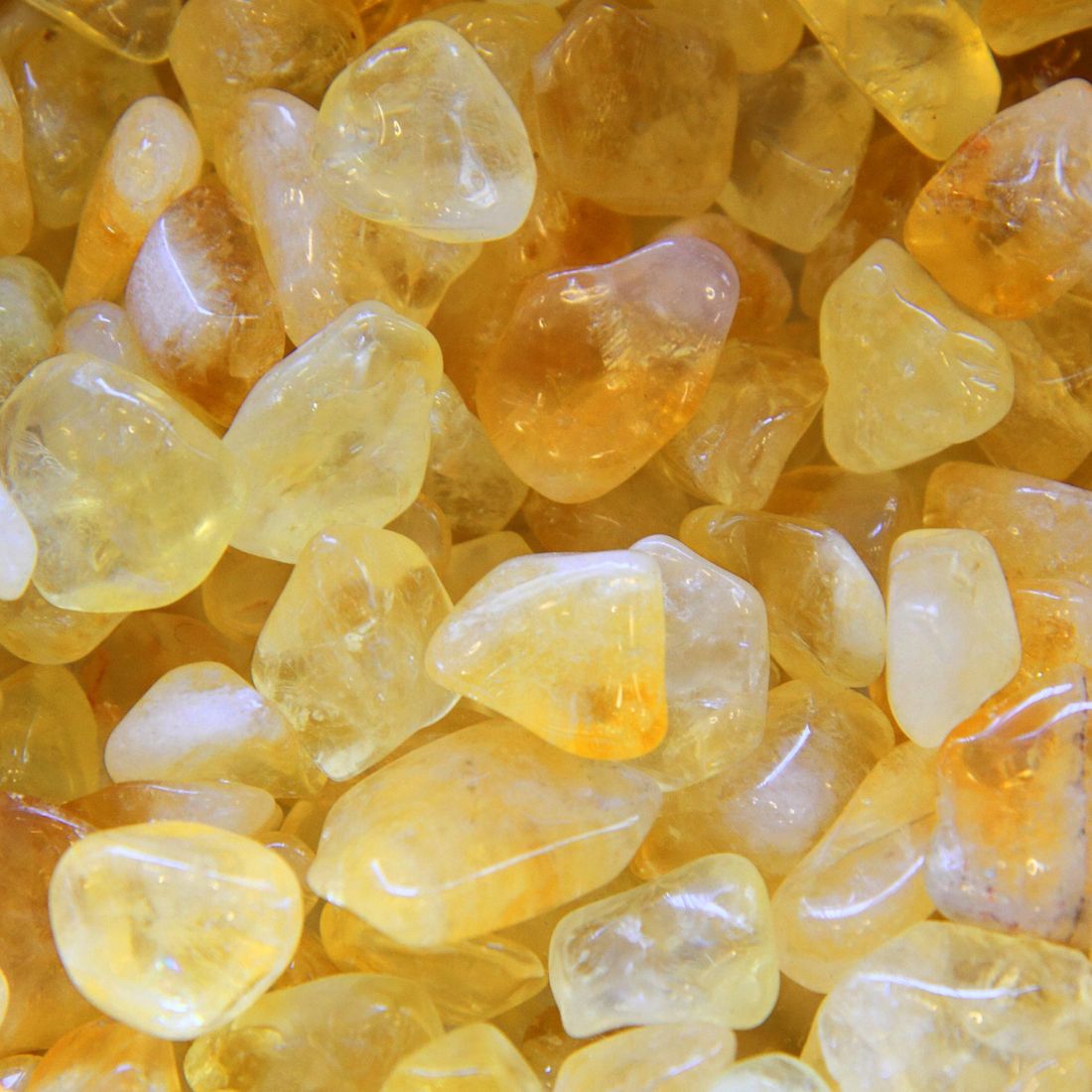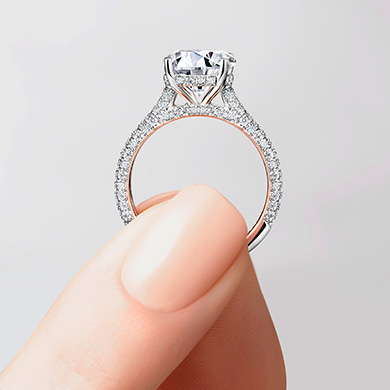November’s birthstones, Topaz and Citrine, are more than just beautiful gems—they’re rich in history, meaning, and charm. Their warm, inviting colors and symbolic ties to healing, prosperity, and joy make them special for anyone, whether you were born in November or simply admire their radiant beauty. By exploring their unique qualities, from technical details to historical significance, you can gain a deeper connection to these stunning stones. In this guide, you’ll discover everything you need to know about November’s birthstones, including how to style and care for them, so they remain cherished pieces for years to come.

(from top to bottom) Single Prong Diamond Hoop Earrings – 23MM – HP032 and Round Cut Split Shank Halo Engagement Ring – Abigail
Topaz
Technical Details
Topaz is one of the hardest gemstones used in jewelry, with a ranking of 8 on the Mohs scale. This exceptional durability makes it a popular choice for rings, necklaces, earrings, and bracelets. Its silicate composition, which includes aluminum and fluorine, gives it an impressive clarity and brilliance.
Topaz can be found in a variety of colors, including blue, pink, and clear, but its golden-yellow and orange shades are traditionally associated with November. Among these, Imperial Topaz is the most sought-after variety. With vibrant orange hues accented by pink undertones, Imperial Topaz is rare and highly valued by gem enthusiasts.
Despite its strength, Topaz requires careful handling due to its perfect cleavage. This means it can split along specific planes if struck hard. As a result, while Topaz is durable enough for daily wear, proper care is essential to maintain its integrity.
Historical Significance
Topaz has a rich and varied history that spans cultures and centuries. In ancient Egypt, it was associated with Ra, the sun god, and believed to carry the life-giving energy of the sun. The Romans held it in high regard as a stone of clarity, thought to enhance vision and mental acuity. During the Middle Ages and the Renaissance, Topaz was revered for its protective qualities. It was thought to ward off curses, evil spirits, and negative energy, making it a powerful talisman.
In addition to its protective role, Topaz was also used as a symbol of royalty and divinity. Kings and queens favored Imperial Topaz for its majestic color and luxurious appeal. Throughout history, Topaz has been a symbol of strength, vitality, and the power to overcome challenges.
Symbolism
Topaz is steeped in symbolic meaning. It represents love, loyalty, and fidelity, making it a popular choice for gifts between romantic partners. Its golden hues are often associated with prosperity, abundance, and success. Topaz is also believed to promote self-confidence and clarity, helping wearers achieve their goals with renewed focus. Its calming energy is said to soothe emotions and encourage emotional balance, making it a stone that symbolizes both inner and outer harmony.
Citrine
Technical Details
Citrine, a stunning variety of quartz, is celebrated for its vibrant yellow to brownish-orange hues. It has a hardness of 7 on the Mohs scale, making it slightly softer than Topaz but still durable enough for most jewelry applications. Citrine’s radiant colors are created by iron impurities within its crystal structure. Natural Citrine is rare, and much of the Citrine on the market today is heat-treated amethyst, which produces brighter and more consistent colors.
This gemstone’s affordability and abundance make it a popular choice for those seeking beauty without a high price tag. Citrine is versatile and works well in a variety of jewelry designs, from minimalist styles to bold statement pieces. Its warmth and brilliance make it a standout choice for any collection.
Historical Significance
The history of Citrine dates back to ancient civilizations, where it was valued as a stone of wealth and success. Known as the “merchant’s stone,” Citrine was carried by traders to attract prosperity and ensure profitable ventures. This belief in its ability to draw abundance persists today, making it a favorite among business owners and entrepreneurs.
Citrine became particularly popular in the Victorian era, when its golden hues matched the opulent designs of the time. It also gained prominence during the Art Deco movement in the early 20th century, where its vibrant colors complemented bold and geometric jewelry designs. Citrine’s enduring popularity stems from its ability to symbolize warmth, positivity, and wealth across cultures and eras.
Symbolism
Citrine’s sunny disposition makes it a stone of joy, vitality, and abundance. It is associated with the sun, symbolizing life, energy, and warmth. Many believe Citrine has the power to dispel negative energy and promote positivity, making it a popular choice for those seeking emotional balance and creative inspiration. Citrine is also said to enhance confidence and self-expression, empowering wearers to embrace their individuality. Its link to wealth and prosperity continues to make it a stone of good fortune and success.
Styling Recommendations for November Birthstones
Both Topaz and Citrine offer versatility and beauty, making them perfect for a wide range of jewelry styles. Topaz, with its brilliance and range of colors, can be styled to suit both classic and contemporary tastes. For a timeless look, golden Topaz set in gold settings enhances its warm tones and creates a cohesive design. Imperial Topaz, with its luxurious orange hues, works beautifully in statement pieces like cocktail rings or bold necklaces. Pairing Topaz with silver or white gold creates a modern and striking contrast, making it ideal for those who prefer cooler tones in their jewelry.
Citrine’s warm palette makes it equally adaptable to various styles. Gold settings complement its sunny hues, creating a harmonious and autumn-inspired aesthetic. Citrine also shines in minimalist designs, where its radiant color becomes the focal point. This gemstone is a popular choice for pendants, earrings, and bracelets, adding a touch of warmth to everyday wear. When combined with mixed metals like rose gold or silver, Citrine takes on a contemporary flair that suits a wide range of preferences, from casual to formal occasions.

(from top to bottom) Diamond Cuff Earrings – ER832 and Pear Shaped Unique Engagement Ring – Esmeralda
Care Instructions for November Birthstones
Proper care ensures the longevity and brilliance of both Topaz and Citrine. Cleaning these gemstones is simple: use warm, soapy water and a soft brush to remove dirt and grime. Avoid harsh chemicals or ultrasonic cleaners, as they may damage the surface or treatment of the stones. After cleaning, pat the jewelry dry with a soft cloth and store it in a separate compartment or pouch to prevent scratches.
Topaz, in particular, should be handled with care to avoid sharp impacts, which could cause cleavage. Citrine, while durable, should also be protected from extreme heat or prolonged exposure to sunlight, as this may fade its vibrant color. Removing jewelry before engaging in physical activities or using household chemicals will help preserve the beauty of your gemstones.
Final Thoughts
November birthstones, Topaz and Citrine, are timeless representations of warmth, beauty, and abundance. Topaz, with its brilliance and regal history, exudes elegance and sophistication, while Citrine’s sunny hues and positive energy bring joy and vitality to any jewelry collection. These gemstones are not only stunning but also rich in meaning, making them thoughtful gifts for loved ones or meaningful additions to your personal collection.
Whether you are drawn to Topaz’s symbolism of strength and loyalty or Citrine’s association with wealth and happiness, these stones offer something special for everyone. By understanding their history, properties, and care requirements, you can enjoy the enduring beauty of November birthstones for years to come.




